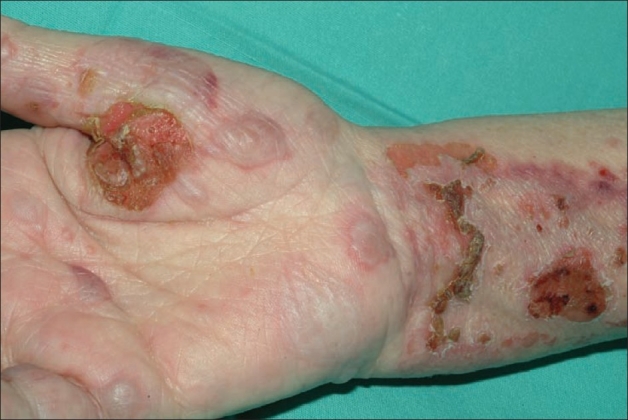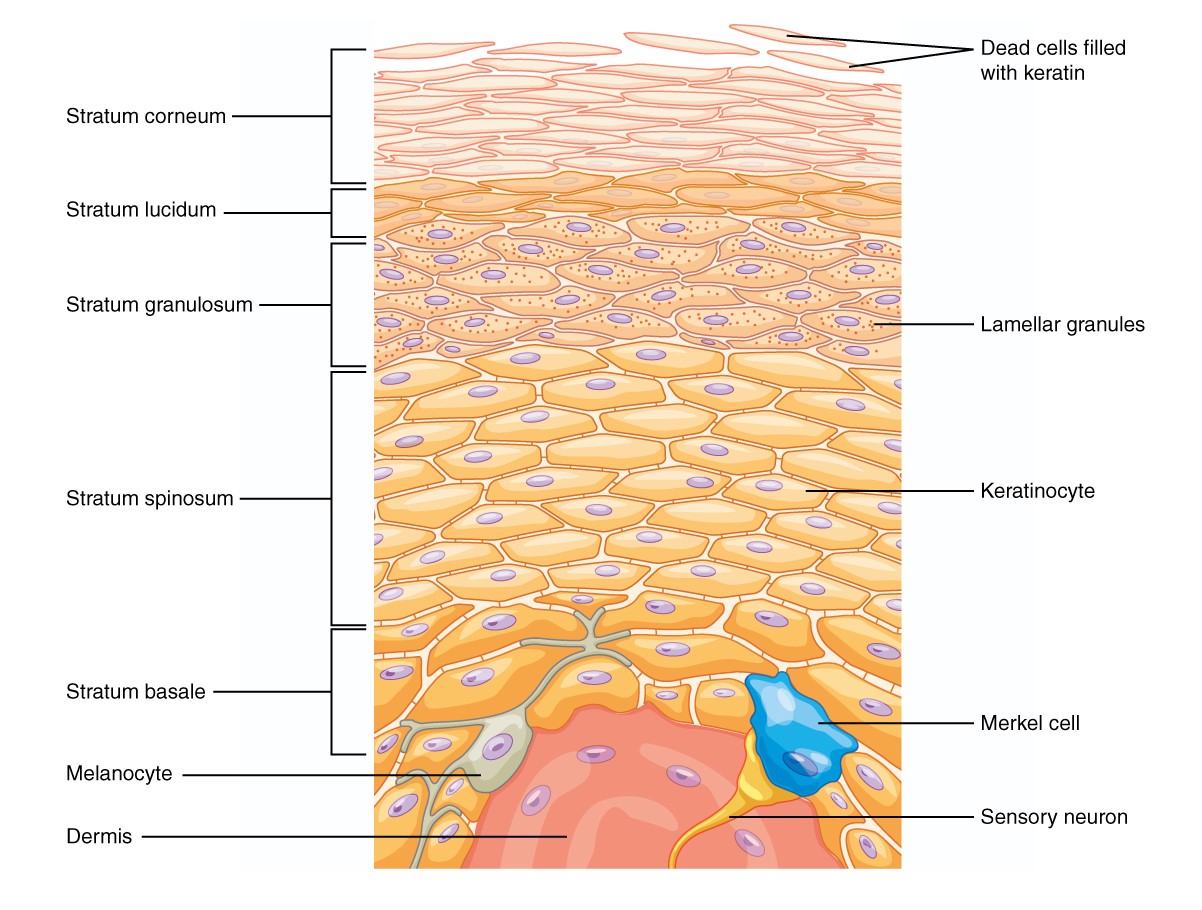Playlist
Show Playlist
Hide Playlist
Bullous Pemphigoid
-
Slides Dermatology Inflammatory Skin Diseases.pdf
-
Reference List Pathology.pdf
-
Download Lecture Overview
00:01 Our topic here is bullous pemphigoid. 00:04 I’d recommend that before you come here, take a look at pemphigus vulgaris, I have, extensively and in great detail, gone through the foundation of what you need to know for two conditions here: pemphigus vulgaris and bullous pemphigoid. 00:22 With bullous pemphigoid, it is also a type 2 hypersensitivity. 00:27 The IgG autoantibodies are then going to attack the bridges. 00:32 Where? The bridge not between the keratinocyte but the bridge between the dermoepidermal junction. 00:40 Picture that for me. 00:42 Dermoepidermal junction is a particular bridge. 00:48 Memorize and focus upon hemi-desmosome. 00:54 So, if you lose the hemi-desmosome or the function of the hemi-desmosome has been compromised due to such attacks, first let me tell you, you’re going to form a very, very tight blister that we call a bullae. 01:08 The skin is not going to come off, and in terms of mortality, there’s an increased risk of mortality with pemphigus vulgaris, then there is with bullous pemphigoid. 01:19 I recommend when you’re doing this condition, you also, at the same time, spend a few minutes and review pemphigus vulgaris so that you’ll never forget which particular bridge is being attacked in which condition and how your patient is going to present. 01:39 The demographics: Elderly, debilitated patients. 01:43 Usually presents first on the lower extremities, whereas in pemphigus vulgaris, it’s pretty much everywhere. 01:50 Loss of keratinocyte adhesion to the basement membrane leads to large tense blisters. 01:59 Why am I being so dramatic here? Because I was being dramatic when we did pemphigus vulgaris, and I told you, those blisters were raupturing in superficial blisters. 02:09 These blisters that are bullae are large and taut or tense. 02:16 What’s being affected? Hemi or desmosome. 02:20 This is the hemi-desmosome. 02:24 Take a look at the bullae here. 02:26 Large blisters, most likely on the lower extremity, thighs and such, maybe the lower abdomen, and maybe the axilla. 02:36 The management:. 02:37 Once again, immunosuppressants because it’s an autoimmune disease.
About the Lecture
The lecture Bullous Pemphigoid by Carlo Raj, MD is from the course Inflammatory Skin Diseases.
Included Quiz Questions
Which of the following statements regarding bullous pemphigoid is TRUE?
- Bullae are tense.
- It is classified as a type I hypersensitivity reaction.
- Intraepithelial desmosomes are primarily affected.
- It primarily affects children.
- A histopathological appearance resembling a "row of tombstones" is characteristic.
Bullous pemphigoid is classified as a type II hypersensitivity reaction in which IgG autoantibodies attack hemidesmosome-associated structures and impair their function, which leads to...
- ...loss of keratinocyte adhesion to the basement membrane.
- ...intraepithelial cleavage with acantholysis (detached keratinocytes) primarily localized to the suprabasal region.
- ...sparing of the dermoepidermal junction.
- ...a positive Nikolsky sign.
- ...a high mortality risk.
Customer reviews
5,0 of 5 stars
| 5 Stars |
|
1 |
| 4 Stars |
|
0 |
| 3 Stars |
|
0 |
| 2 Stars |
|
0 |
| 1 Star |
|
0 |
dr carlo raj has explained the topic very clearly and in a very point wise manner..........it was very helpful............





